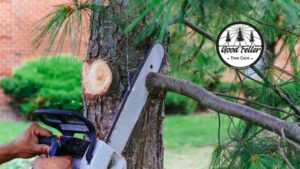Tacoma, Washington—once an industrial powerhouse on the shores of Puget Sound—is in the midst of an environmental renaissance. For decades, the city’s waterfront and surrounding areas bore the brunt of heavy industry, with pollution from mills, factories, and ports leaving a toxic legacy in the soil, sediment, and groundwater. Today, environmental remediation Tacoma plays a crucial role in reversing that history and building a cleaner, healthier, and more sustainable future.
This article explores what environmental remediation entails, why it’s essential in Tacoma, and how local projects are revitalizing contaminated sites while protecting ecosystems and public health.
What Is Environmental Remediation?
Environmental remediation refers to the process of removing pollutants and contaminants from environmental media such as soil, groundwater, sediment, and surface water. It encompasses a range of techniques including:
-
Soil excavation and replacement
-
Groundwater treatment and filtration
-
Sediment dredging
-
Capping contaminated areas
-
Phytoremediation (plant-based cleanup)
-
Bioremediation (microbial degradation of pollutants)
The goal of remediation is to restore contaminated land or water to a condition that is safe for people, animals, and the environment—and in many cases, to make it suitable for redevelopment or conservation.
Why Tacoma Needs Environmental Remediation
Tacoma’s industrial roots run deep. From the early 1900s through the mid-20th century, the city’s economy was fueled by smelters, paper mills, chemical plants, and shipyards. Unfortunately, many of these industries discharged hazardous waste directly into the environment, leaving behind a legacy of pollution.
Notable environmental concerns in Tacoma include:
-
The Commencement Bay Superfund Site – One of the most contaminated areas in the country, including waterways, harbor sediments, and nearby uplands.
-
ASARCO Smelter Contamination – The former copper smelter released arsenic and lead into the air, contaminating soil in Tacoma and surrounding communities.
-
Brownfields and Industrial Parcels – Vacant and underutilized industrial properties often suffer from petroleum, heavy metals, solvents, and other toxic substances.
Today, thanks to a combination of public funding, private sector investment, and strict environmental regulations, remediation is helping Tacoma turn these liabilities into assets.
Key Environmental Remediation Projects in Tacoma
1. Commencement Bay Cleanup
Once one of the most polluted bays in America, Commencement Bay has undergone significant remediation, led by the U.S. Environmental Protection Agency (EPA) and the Washington State Department of Ecology. Efforts include:
-
Sediment dredging and capping
-
Restoration of fish and wildlife habitat
-
Removal of contaminated upland soils
-
Long-term monitoring of water quality
These projects have dramatically improved water quality, benefiting marine life, recreational users, and port operations.
2. The Tacoma Smelter Plume Project
The Washington State Department of Ecology is managing cleanup of the Tacoma Smelter Plume, which affected over 1,000 square miles with arsenic and lead fallout. Efforts include:
-
Replacing contaminated soil at residential properties
-
Conducting public education and outreach
-
Supporting cleanup for schools, parks, and childcare facilities
This program is one of the largest residential soil remediation initiatives in the country.
3. Brownfield Redevelopment
Environmental remediation is transforming former industrial brownfield sites into valuable real estate for housing, green space, and commercial development. Tacoma’s “Thea Foss Waterway” is a prime example—once a polluted zone, it now features mixed-use development, marinas, trails, and public parks.
Environmental Remediation Techniques in Tacoma
Remediation in Tacoma varies depending on site conditions and contaminant type. Common strategies include:
-
Excavation and Off-site Disposal – Contaminated soil is removed and safely disposed of at regulated facilities.
-
In-Situ Treatment – Techniques like chemical oxidation or thermal desorption treat soil or groundwater in place.
-
Sediment Remediation – Dredging and capping are used to isolate or remove contaminants from harbor sediments.
-
Bioremediation – Naturally occurring or engineered microbes break down petroleum, solvents, and other organic pollutants.
-
Groundwater Pump and Treat – Contaminated groundwater is pumped, treated above ground, and re-injected or safely discharged.
All remediation efforts are guided by federal and state regulations, including the Model Toxics Control Act (MTCA) and oversight from agencies like the EPA and Department of Ecology.
Benefits of Environmental Remediation in Tacoma
1. Public Health Protection
Removing toxins like arsenic, lead, and PCBs reduces risks of cancer, neurological disorders, and respiratory illnesses—especially in vulnerable populations like children.
2. Environmental Restoration
Remediation improves ecosystems, bringing back fish populations, wetlands, and wildlife. It also improves stormwater quality and reduces the urban heat island effect.
3. Economic Development
Clean land attracts developers and investors. Remediated sites can be transformed into homes, offices, parks, or commercial spaces, boosting Tacoma’s tax base and job market.
4. Community Revitalization
Reviving blighted or hazardous areas enhances community pride, improves aesthetics, and promotes environmental justice for historically impacted neighborhoods.
Choosing an Environmental Remediation Company in Tacoma
Whether you’re a developer, public agency, or private landowner, selecting the right remediation partner is crucial. Look for a company that offers:
-
Experience with Tacoma-area projects
-
Licensed environmental engineers and scientists
-
Familiarity with Washington State regulations
-
Sustainable and cost-effective solutions
-
Strong safety and compliance record
-
Transparent communication with stakeholders
Collaborating with local contractors and community organizations can also ensure that remediation projects are inclusive and beneficial to residents.
Conclusion
Environmental remediation in Tacoma, WA, is not just a technical process—it’s a vital part of the city’s journey toward resilience, sustainability, and equity. From cleaning up Superfund sites to revitalizing brownfields, these efforts are reshaping Tacoma’s landscape, one parcel at a time.
With continued investment and collaboration between government, industry, and the community, Tacoma can serve as a model for how cities can heal from their industrial past and build a cleaner, greener future.






